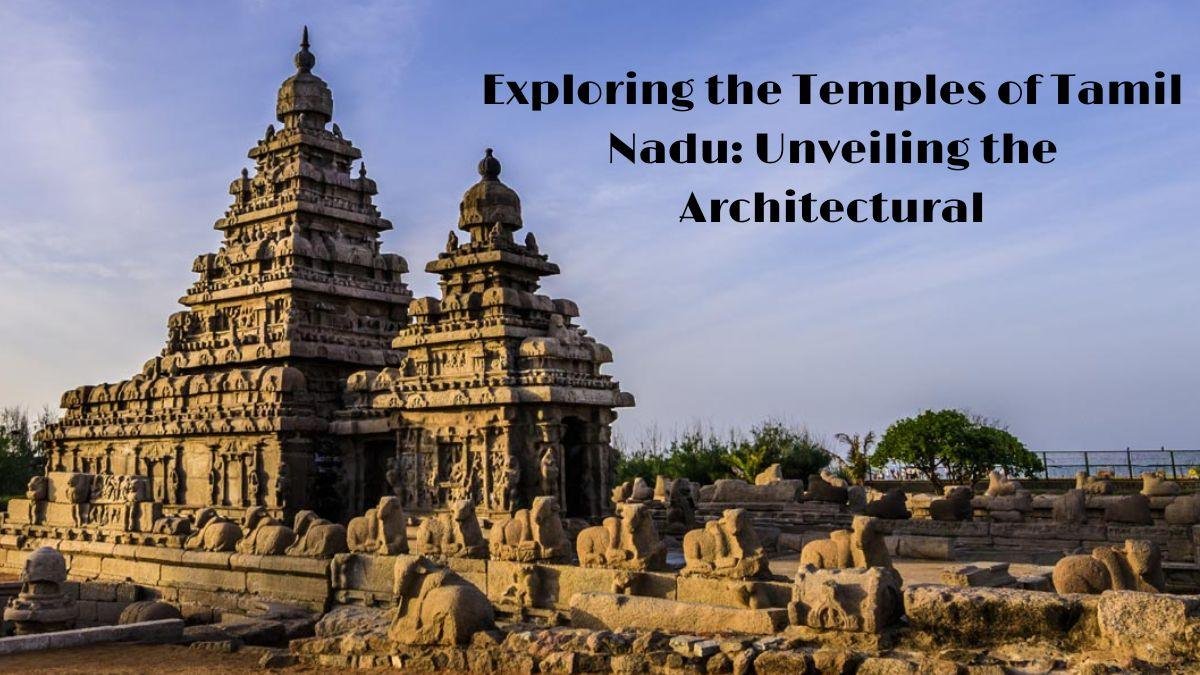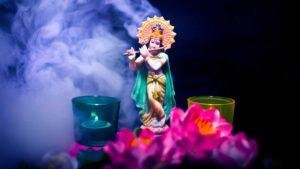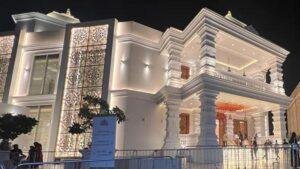Tamil Nadu, a southern state of India, is a land steeped in history, culture, and spirituality. Known as the “Land of Temples,” it boasts a rich heritage of magnificent temple complexes that showcase the architectural splendor and spiritual fervor of the Dravidian civilization. From the towering gopurams (gateways) adorned with intricate sculptures to the sacred halls that resonate with devotional chants, each temple tells a story of devotion, craftsmanship, and religious significance. Join us on a captivating journey as we explore the temples of Tamil Nadu, unravelling the secrets of Dravidian architecture and delving into the spiritual essence that permeates these sacred spaces.
Dravidian Architecture: An Overview
Dravidian architecture refers to the architectural style that developed in the southern region of India, primarily in the state of Tamil Nadu. It is characterized by its grand and intricate structures, elaborate carvings, and towering gateways known as gopurams. Dravidian architectures are primarily associated with Hindu temples and is known for its emphasis on symmetry, geometric precision, and verticality.
The key Features of Dravidian Architecture
Gopurams: These towering gateways are one of the most recognizable elements of Dravidian architecture. Gopurams are typically pyramid-shaped structures adorned with intricate sculptures and carvings, often depicting deities, mythological stories, and celestial beings.
- Vimana: Vimana refers to the tall, pyramid-shaped towers that rise above the sanctum sanctorum (the innermost chamber) of the temple. These vimanas are often multi-tiered and adorned with sculptural details and intricate carvings.
- Mandapams: Dravidian temples feature pillared halls known as mandapams, which serve as gathering spaces for devotees during religious ceremonies. Mandapams are often elaborately carved and adorned with sculptures depicting deities, mythical creatures, and scenes from Hindu epics.
- Stone Carvings: Dravidian architecture is renowned for its exquisite stone carvings. Intricate sculptures and reliefs can be found on the temple walls, pillars, and entrances, portraying deities, celestial beings, and mythological narratives.
- Temple Tanks: Many Dravidian temples include large water tanks or ponds known as temple tanks. These tanks hold religious significance and are used for ceremonial purposes.
Historical Background of Dravidian Architecture in Tamil Nadu
The roots of Dravidian architecture in Tamil Nadu can be traced back to the ancient Tamil civilization, which flourished in the region from the 3rd century BCE. The architectural style saw significant development during the rule of the Chola, Pandya, and Pallava dynasties, between the 9th and 13th centuries CE.
The Chola dynasty, in particular, played a crucial role in the evolution and patronage of Dravidian architectures. The reign of the Chola kings saw the construction of magnificent temples, such as the Brihadeeswarar Temple in Thanjavur and the Gangaikonda Cholapuram Temple. These temples became architectural marvels and served as centers of religious and cultural life.
Influence of Religion and Culture on The Development of Dravidian Architecture Style
Religion and culture have had a profound influence on the development of Dravidian architecture in Tamil Nadu. The temples were not just places of worship but also served as centers for social, cultural, and economic activities. The architectural style was shaped by the beliefs, rituals, and customs of the Hindu religion, which formed the foundation of the temple construction.
The verticality of the temple structures is symbolic of the connection between the earthly realm and the divine. The intricate carvings and sculptures on the temple walls depict scenes from Hindu mythology, embodying the religious narratives and beliefs.
The Dravidian architectural style also reflects the cultural identity of Tamil Nadu. It showcases the skill and craftsmanship of the artisans and sculptors of the region, who dedicated their talents to create these awe-inspiring structures. The temples became not only religious landmarks but also symbols of Tamil pride and heritage.
Overview of Madurai Meenakshi Temple

The Madurai Meenakshi Temple, located in the city of Madurai, is one of the most prominent and revered temples in Tamil Nadu. It is dedicated to Goddess Meenakshi, an incarnation of the Hindu goddess Parvati, and her consort Lord Sundareswarar, an aspect of Lord Shiva. The temple complex is a significant pilgrimage site and a vibrant center of religious and cultural activities.
Historical Background and Legends Associated with The Temple
The origins of the Madurai Meenakshi Temple can be traced back to ancient times. According to Hindu mythology, the temple was originally built by Lord Indra, the king of gods, and later reconstructed by the Pandya king Kulasekara Pandyan. The temple complex has witnessed expansions and renovations by various dynasties, including the Nayak rulers of Madurai.
The legends surrounding the temple revolve around the divine marriage of Goddess Meenakshi and Lord Sundareswarar. It is believed that the goddess was born with three breasts, and a prophecy stated that her third breast would disappear upon meeting her divine consort. The prophecy came true when she met Lord Shiva in Madurai, and they got married, making the temple the sacred abode of the divine couple.
Architectural Highlights and Design Elements
- Gopurams (tower gateways): The Madurai Meenakshi Temple is renowned for its stunning gopurams, which are monumental tower gateways that serve as the entrances to the temple complex. The temple has fourteen gopurams in total, with the tallest one being the southern gopuram, standing at around 52 meters in height. These gopurams are elaborately decorated with intricate sculptures and vibrant paintings depicting various deities and mythological scenes.
- Mandapams (pillared halls): The temple complex houses several mandapams, or pillared halls, which are used for various religious ceremonies and gatherings. The most significant among them is the Thousand Pillar Mandapam, which is a marvel of architectural excellence. It is adorned with intricately carved pillars that showcase intricate detailing and sculptural artistry.
- Sanctum and the Meenakshi shrine: The sanctum sanctorum of the Madurai Meenakshi Temple houses the shrines of Goddess Meenakshi and Lord Sundareswarar. The Meenakshi shrine is adorned with elaborate gold jewelry and garments, and the goddess is depicted with a golden crown and a lotus in her hand. The sanctum is considered the holiest part of the temple and is visited by a large number of devotees.
The temple complex also features various smaller shrines dedicated to different deities, including Ganesha, Murugan, and other Hindu gods and goddesses. The walls of the temple are embellished with colorful frescoes depicting religious and mythological narratives, showcasing the artistic skills of the artisans of the time.
Introduction to the Shore Temple

The Shore Temple, located in Mahabalipuram (also known as Mamallapuram), Tamil Nadu, is a renowned monument and a UNESCO World Heritage Site. It stands as a remarkable testament to the architectural brilliance of the Pallava dynasty, which ruled the region during the 7th and 8th centuries CE. The temple complex, situated on the shores of the Bay of Bengal, attracts visitors from around the world due to its historical significance and architectural grandeur.
Significance of The Temple as a Unique Coastal Monument
The Shore Temple holds great significance as it is one of the few surviving examples of Pallava architecture in Mahabalipuram. It stands as a symbol of the region’s rich cultural and architectural heritage. What sets the temple apart is its coastal location, with the Bay of Bengal serving as a stunning backdrop. The temple’s proximity to the sea adds to its uniqueness and magnificence, making it an iconic landmark.
Architectural Features and Design Elements
Monolithic rock-cut structures
The Shore Temple is primarily known for its monolithic rock-cut structures, which were carved out of large granite boulders. The temple complex comprises three main shrines, with the central shrine dedicated to Lord Shiva and the side shrines dedicated to Lord Vishnu. These shrines are built in the form of pyramidal towers, popularly known as vimanas, which are characteristic of Dravidian architecture.
Intricate carvings and sculptures
The temple is adorned with intricate carvings and sculptures that depict various deities, celestial beings, and mythological narratives. The carvings showcase the exceptional craftsmanship of the Pallava artisans. The sculptures are finely detailed, displaying expressions, postures, and ornamentation that reflect the artistic finesse of the period.
Integration of nature and the surrounding landscape
The Shore Temple is known for its seamless integration with the natural surroundings. The temple complex is strategically positioned, with the waves of the Bay of Bengal gently caressing its foundation. The architecture of the temple harmoniously blends with the natural beauty of the coastal environment, creating a captivating aesthetic appeal.
The temple’s setting also emphasizes the Pallava’s connection with nature. The architectural elements and sculptures of the temple often depict flora and fauna, marine life, and mythological creatures, highlighting the significance of the sea in the lives and beliefs of the Pallava dynasty.
The Shore Temple stands as a testament to the Pallava’s architectural ingenuity, the artistic finesse of its sculptors, and the integration of nature into their creations. It continues to captivate visitors with its mesmerizing coastal location, intricate carvings, and the spiritual ambiance it exudes.
Thillai Nataraja Temple in Chidambaram

The Thillai Nataraja Temple, located in Chidambaram, Tamil Nadu, is an ancient and revered Hindu temple dedicated to Lord Shiva. It holds significant religious and cultural importance, particularly due to its association with Lord Shiva’s cosmic dance, known as the Nataraja.
Association with Lord Shiva’s cosmic dance, Nataraja
The Thillai Nataraja Temple is closely associated with Lord Shiva’s Nataraja form, which symbolizes the cosmic dance of creation, preservation, and destruction. It is believed that Lord Shiva performed his celestial dance, the Ananda Tandava, in the temple’s sanctum sanctorum, known as the Chit Sabha. The dance is said to represent the rhythmic cycles of life, the universe, and the eternal rhythm of existence.
Unique Architectural Elements and Symbolism
The Thillai Nataraja Temple is renowned for its unique architectural elements and the rich symbolism incorporated into its design. Key features include:
- Chit Sabha: The Chit Sabha, the main sanctum of the temple, represents the divine space where Lord Shiva performed his cosmic dance. It is an expansive and magnificent space adorned with intricate sculptures and carvings.
- Akasa Lingam: The sanctum of the Chit Sabha houses the Akasa Lingam, an empty space symbolizing Lord Shiva’s formless and infinite nature. Devotees worship the Akasa Lingam, recognizing the presence of Lord Shiva’s cosmic energy within it.
- Sabhai Sthalangal: The temple complex consists of five Sabhai Sthalangal, or sacred halls, representing the five elements of nature—earth, water, fire, air, and ether. Each hall is adorned with unique architectural features and sculptures that symbolize the respective element.
- Hall of Thousand Pillars: The temple’s “Thousand Pillar Hall” is a remarkable architectural masterpiece, characterized by intricately carved pillars showcasing various divine beings, celestial dancers, and mythological figures. The pillars represent the cosmic axis connecting the earthly and celestial realms.
- Nataraja Shrine: The temple also houses a separate shrine dedicated to Lord Nataraja, featuring a bronze idol of Lord Shiva in his dancing form. This shrine is a focal point of worship and reverence for devotees.
Conclusion
The temples of Tamil Nadu stand as a testament to the rich cultural heritage and architectural brilliance of the Dravidian civilization. Through this journey exploring the temples, we have witnessed the awe-inspiring beauty and grandeur of these sacred structures.
From the magnificent Brihadeeswarar Temple in Thanjavur to the enchanting Meenakshi Temple in Madurai, and from the coastal beauty of the Shore Temple in Mahabalipuram to the divine aura of the Ramanathaswamy Temple in Rameswaram, each temple has its unique story to tell and leaves an indelible mark on those who visit.
The Dravidian architectural style, characterized by towering gopurams, intricate carvings, and sacred mandapams, showcases the mastery of craftsmanship and the devotion of the artisans who brought these structures to life. The temples not only serve as places of worship but also as cultural and educational centers, preserving the traditions, mythology, and art forms of ancient Tamil Nadu.



















Add comment